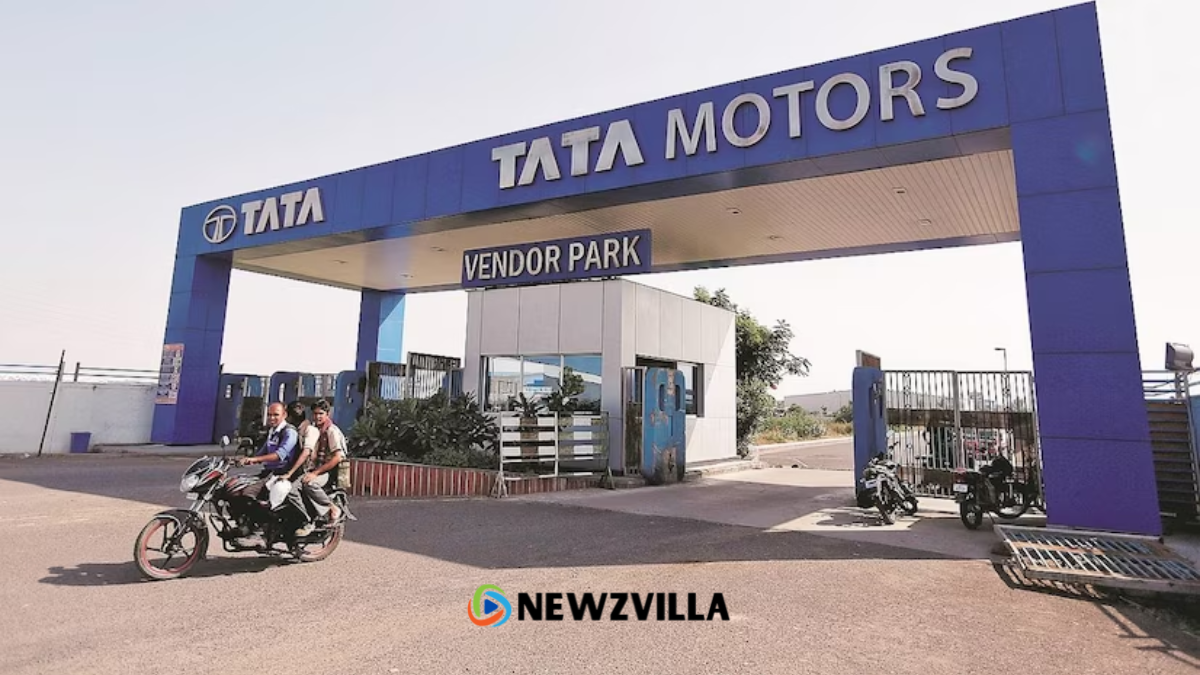On Monday, Tata Motors Ltd (TML) board sanctioned a plan to split the automobile manufacturer into two distinct publicly traded firms.
One entity will focus on commercial vehicles (CV) and associated investments, while the other will oversee passenger vehicles (PV) businesses, comprising domestic PV, electric vehicles (EV), Jaguar Land Rover (JLR), and their associated investments.
Industry experts and analysts suggest that now is the opportune moment for the company to separate its passenger and commercial vehicle divisions, unlocking value for the EV sector. Nevertheless, they do not foresee this step leading to an eventual separate listing of the JLR and EV businesses.
The announcement was made after the market closed. TML stock ended the day’s trading slightly lower at Rs 987.2 per share on the BSE.
The demerger will proceed through a scheme of arrangement sanctioned by the National Company Law Tribunal (NCLT). Under this arrangement, all shareholders of TML will maintain identical holdings in both listed entities. The NCLT scheme for the demerger is slated for presentation to the TML board of directors for approval in the forthcoming months. It will be contingent on essential approvals from shareholders, creditors, and regulatory bodies, a process that could span an additional 12-15 months. The company has affirmed that the demerger will have no adverse impact on employees, customers, or business partners.

N Chandrasekaran, the chairman of Tata Sons, lauded Tata Motors for orchestrating a robust turnaround in recent years.
He stated, “The three automotive business units now function autonomously, ensuring steady performance. This division will empower them to seize market opportunities by sharpening their focus and agility, enhancing customer experience, fostering employee growth, and increasing shareholder value.”
Since 2021, the businesses PV (ICE and EV), JLR, and CV have been functioning autonomously under their individual CEOs. TML disclosed on Monday that these businesses have exhibited robust performance by effectively executing unique strategies.
Also Read: Tata Motors, Maruti, Hyundai register robust sales in Feb on strong SUV demand
The company emphasized that the demerger represents a “natural evolution” following the earlier subsidiarisation of the PV and EV businesses in 2022. This move aims to enhance the independence of each business unit, enabling them to pursue their strategies effectively, achieve accelerated growth, and strengthen accountability.
Moreover, although there are minimal overlaps between the CV and PV sectors, significant synergies can be leveraged spanning PV, EV, and JLR. This is especially true in the realms of electric vehicles, autonomous driving, and vehicle software. The demerger is poised to solidify these connections, as stated.

Analyzing the reasoning behind the demerger, Deven Choksey, the managing director of DRChoksey FinServ, explained to Business Standard that the electric vehicle sector, established as a separate entity, requires an investment of approximately $2 billion for portfolio development and expansion. This strategic move to demerge the passenger vehicle (PV) and commercial vehicle (CV) businesses aims to unlock greater valuations. With the current trend favoring electric vehicle companies receiving high valuations, Tata Motors’ PV portfolio, encompassing JLR (set to transition to electric by 2025), its EV business, and domestic ICE operations, will be separated.
Choksey added, “When considering profitability figures, JLR and the domestic PV segment are projected to achieve Rs 20,000-22,000 crore PBT by FY24. The PV sector returned to profitability in Q3FY23 after seven quarters and has since been performing strongly.”
Analysts believed that due to the cyclical nature of the CV business, splitting it from the PV business made the latter more appealing to investors than keeping them together as one entity.
Deepak Jasani, the head of retail research at HDFC Securities, stated that the commercial vehicle (CV) sector experiences more cyclical fluctuations compared to the passenger vehicle (PV) sector. Typically, periods of prosperity in the CV industry are followed by downturns, while the PV sector has witnessed growth in recent quarters. Jasani highlighted the challenge of attracting partners to a merged entity, as potential investors interested in the PV sector might not share the same enthusiasm for the CV sector, and vice versa.
Regarding the potential demerger of JLR and EV business arms, Jasani expressed skepticism about its viability as a value proposition. He noted that JLR’s operations rely heavily on the Chinese and US markets, while the Indian PV market remains stable. Consequently, the integration of JLR, ICE, and EV businesses appears to offer a more compelling proposition.

In the most recent 12-month period until December 2023, JLR’s business excelled in both revenue and margin. It achieved a revenue of Rs 2.91 trillion in TTM 2023, boasting an Ebitda margin of 15.4%. The PV business generated Rs 50,016 crore in revenue with an Ebitda margin of 6.4%, while the CV business recorded revenue of Rs 78,441 crore and an Ebitda margin of 10.3%.
Meanwhile, the unwinding of the differential voting rights (DVR) shares programme is expected to be completed before this demerger.
In July, Tata Motors announced the discontinuation of its differential voting rights (DVR) or A-share program, marking the end of an innovative fundraising tool that didn’t gain traction on Dalal Street. The board greenlit a plan to exchange seven ordinary shares for every 10 A-shares held, leading to the cancellation of all existing A-shares. Jasani mentioned, “The demerger process may span 12-15 months, allowing sufficient time for the DVR conversion to conclude.”








Leave feedback about this